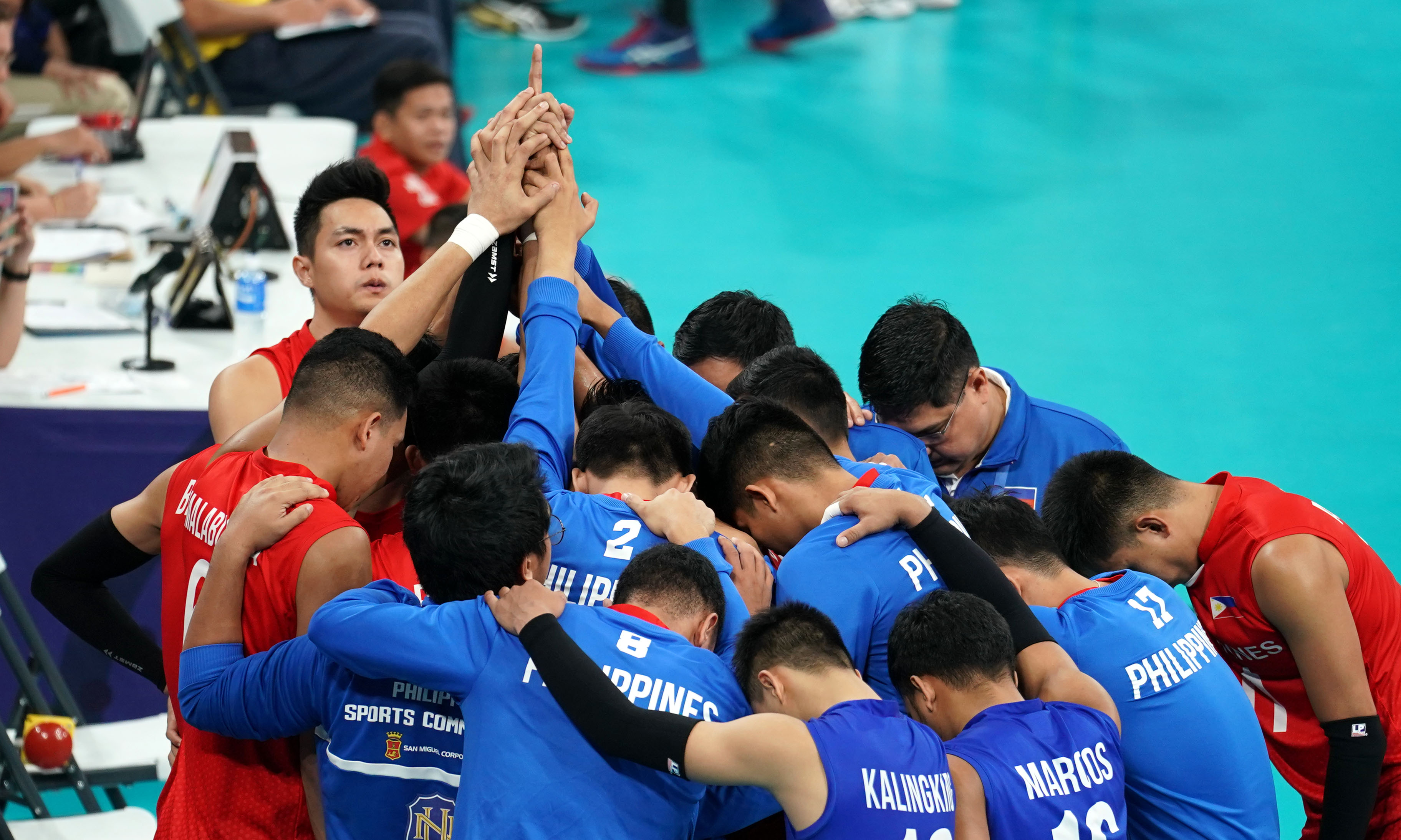Trapped in a paradox

The unheralded men’s team provided the biggest volleyball story of the year after clinching a surprise silver in the SEA Games. —AUGUST DELA CRUZ
During the 30th Southeast Asian Games, when the Philippines was storming to the edge of glory, the biennial meet’s chief organizer, Ramon “Tats” Suzara, offered to make a bold assessment.
Not on the ongoing Games, but on the surprising turn of events in volleyball competitions.
The controversial figure both in Philippine volleyball and in Philippine SEA Games Organizing Committee (Phisgoc) said the women’s team’s “superstar culture” would eventually be its downfall.
“The men’s team could make it all the way to the gold medal,” he told the Inquirer back then at the busy New Clark City sports complex. “It’s because they don’t have that superstar mentality.”
According to him, women’s volleyball’s huge popularity, while a boon to the sport, has been a bane to the national squad.
“You can quote me on that,” added Suzara, the former Philippine Superliga (PSL) president who assumed the role of chief operating officer of the Phisgoc after a controversial parting of ways with the PSL.
He wasn’t fetching his observation out of thin air. The popularity of the women’s game has spawned an ugly offspring: Two leagues in a race to hoard the best talents in the country. And while that has provided women stars more opportunities, it has left the national team vulnerable to scheduling and training woes.
Sure enough, in the faraway Philsports Arena, Suzara’s predictions were slowly unfolding.
The women’s team—dotted with superstars—totally bombed out and finished fourth and last. They didn’t win a single match.
The men’s team, playing all-out well under the shadows of their female counterparts, came out of nowhere and shocked perennial champion Thailand to make the championship match.Marck Espejo and Bryan Bagunas, big names in their own little circle who have never crossed into mainstream popularity, joined forces with an intrepid, talented bunch to accomplish what so little people gave them credit for.
Eventually, the men’s team had to settle for silver medal, its biggest victory in recent memory.
It is worth noting that the men’s team had about eight months to prepare for the SEA Games. The women’s team had less than three. Even the Larong Volleyball sa Pilipinas Inc. (LVPI), admitted that a divided women’s game slowed the growth of the national squad.
Peter Cayco, the LVPI chief, said having two leagues was detrimental to the national program. Players like Alyssa Valdez of the Premier Volleyball League (PVL) and Aby Maraño of the PSL agreed, saying unity was the only way to achieve success internationally.
Young star Maddie Madayag admitted it was tough to get practice sessions and training camps together because of the conflicting schedule.
Meanwhile, before the SEA Games, the men’s team quietly prepared under the low-key method of coach Dante Alinsunurin.
There was huge anticipation of the women’s lineup. But along with the spotlight came the scrutiny. There were protests when Jaja Santiago, Dindin Manabat and Kalei Mau could not make the team for several reasons. Valdez cutting short her Japan training camp made the rounds on social media where, quite unfairly, women’s team coach Shaq delos Santos and open spiker Ces Molina were mercilessly trolled online. The LVPI and the PSL were forced to seek legal measures against the trolling.
True the television network wars, social media and legions of fans made women’s volleyball even stronger this year. Without the skyrocketing popularity, there would be no leagues. Without the leagues, the national team would feed on either young stars from the collegiate leagues or veterans who had been out of action for a while. But that popularity may have doomed the national program, leaving the sport caught in a paradox—almost a catch-22 situation if not for the fact that there is a simplistic solution staring the sport in the eye.
Unity.
But can the LVPI, which is experiencing a bounty of young and talented players like PVL star Madayag and rising PSL standout Eya Laure ready to serve the national squad and form the foundation of it future, navigate the tricky political cesspool that unity would demand?
Maybe 2020 can supply the answers.
For now, the LVPI looks content on resting on the continued growth of the sport and the rise of the men’s game.
“There are ups and downs but we are definitely getting there,” said Cayco. “Right now we are focusing on the good.”
It’s a fine place to start. But it’s not exactly where the focus should end.
